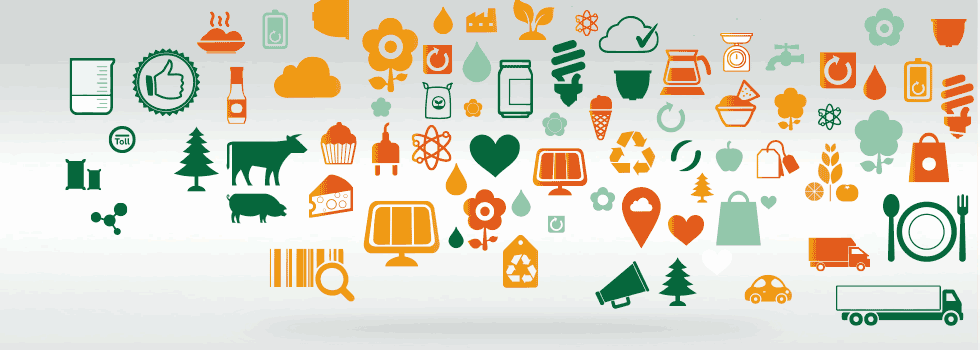Promotional Features
#CloudBlending: Building an agri-food community around powder blending as a service
The agri-food industry faces big challenges. Globalized supply chains established in recent decades have resulted in high levels of food loss and waste at a time when the world’s growing population is putting a strain on resources. This challenge demands an innovative, global solution that brings together all stakeholders in the sector.
The need for change is clear. Today, about one-third of all food produced for human consumption is lost or wasted, according to the Food and Agriculture Organization (FAO). That amounts to 1.3bn tonnes of food waste, losses of about $1 trillion and a threat to the sustainability of food supply.
Given one in nine people worldwide already go hungry to bed and 70% of water resources are consumed by the agricultural sector, the current agri-food model appears ill-equipped to meet the demand in the coming decades.
Blendhub believes food powder is part of that solution. Either used as part of a food product or the food itself, powder mix has advantages over other forms of nutrition. Food powder is easy to handle and transport, has a long shelf life that makes it simple to store in a diverse range of climates and can contain mixes of nutrients tailored to subpopulations of people. These benefits are complemented by the ability to use comprehensive quality controls and food safety assurance processes to ensure the product meets specifications.
Blendhub suggests these benefits support wider use. Yet, the current agri-food product system creates barriers to greater use of food powders. Today, if a small company or food technologist has an idea for a powder mix they struggle to access the resources they need to test it and turn it into a product. They need an on-demand way to quickly realize powder mix ideas.
At the other end of the spectrum, large companies have facilities but still face similar constraints to smaller organizations. Large companies cannot stop production at their factories to trial a powder blend, nor can they necessarily justify investing in a facility to make a novel product or expand into a new market. The high cost of failure in today’s system slows innovation and expansion. These companies also need access to more flexible capacity without making capital investments.
Blendhub has responded to this challenge by developing #CloudBlending, a fully-integrated platform service that draws together every agent in the agri-food industry. #CloudBlending applies the Software-as-a-Service principles that revolutionized IT to powder blends. The result is the only full-service solution offered on a price-per-kilogram basis.
What is #CloudBlending
#CloudBlending is food powder blending as a service, also known as FPBaaS. Working out of portable, modular production facilities integrated in hubs around the world, Blendhub is mixing powders on demand. Blendhub can set up these facilities, which pack up into shipping containers, wherever offers the best value for its customers. If a customer wants to make powder for the Indian market, Blendhub may recommend the facility in Dubai to benefit from optimized logistics, raw material location and production capabilities. #CloudBlending pricing is transparent and customers only pay for what they order.
The flexibility of this business model has implications for all players in the agri-food industry, food technologists, raw material producers, machinery producers, blenders, distributors or food producers. Blendhub wants all these groups to collaborate and have a place on the #CloudBlending platform.
This is already happening. During pilot testing of the end-to-end supply chain service Blendhub began to show the value of the #CloudBlending platform to different types of business, including big dairy companies in Latin America and sugar producers in Spain.
Big companies can use the platform in multiple ways. If a company experiences a spike in demand, it can outsource the spike to Blendhub. This allows the company to increase supply to meet temporary rises in demand without making capital investments in capacity that will be underutilized once the spike ends.
Other uses of the platform include the development of new products and introduction of existing products into new markets. Today, in both scenarios, the company must evaluate whether the likely returns and risks of the expansion justify the investment in capacity.
#CloudBlending is designed to free companies from these uncertainties. Instead of making this hard decision, the company requests Blendhub produce a new powder or set up a facility in a new location. If the product launch or expansion is a success, the company can invest in its in-house capabilities knowing it is likely to generate a return on its investment. If the trial suggests the expansion is not commercially viable, the company has only lost the investment it costed to produce batches of the powder through #CloudBlending at a price per kilo.
Either way, the company saves time. #CloudBlending offers shorter lead times than setting up in-house capacity. This reduces time to market. For successful launches, this enables the firm to increase profits as sales start ramping up sooner.
#CloudBlending offers these smaller enterprises and individuals a way to realize their ideas through the community where all stakeholders interact to produce the best product. If a freelancer has an idea for a new powder-based soya beverage, he can join the community to find the necessary missing pieces to turn the idea into a product. Within the community will find raw material suppliers to provide the necessary materials, blenders such as Blendhub to mix the ingredients and food brands and distributors to take the product to market.
In this example, #CloudBlending serves as a bridge between startups that have ideas but lack in-house capabilities and large companies that have infrastructure and need innovative products. The bridge is needed to validate the ideas and put them in front of the larger companies that are equipped to turn them into commercial successes.
Expanding the model
The facilities at which Blendhub validates ideas and produces batches can make high-quality food available anywhere in the world. Only minimal infrastructure and low power are needed. This enables firms to choose to make food as close as possible to farmers, raw material producers or final consumers, depending on their specific needs.
Today, Blendhub is working out of sites in Spain, Dubai, India and Mexico, giving it a presence on most continents. The next step is to add locations in Oceania, Colombia, Chile and others which will move Blendhub closer to its goal of having 40 nodes in its network by 2020.
Blendhub is connecting its growing network of nodes in the cloud. This makes it straightforward to replicate the same quality processes at each facility. This replicable model allows Blendhub to transfer production from one location to another while retaining the same quality standards worldwide.
The upshot is companies can expand geographically secure in the knowledge the quality they achieved in one location will be replicated at the new site. Equally, if there is a problem at one site Blendhub can relocate production to another facility quickly and without affecting quality or price. Each site uses near-infrared spectroscopy to verify raw materials and validate the composition of food powder mixes to guarantee highest food safety standards.
These features are designed to attract stakeholders from every corner of the agri-food industry. Blendhub believes the resulting #CloudBlending community and network of hubs will help it achieve its purpose: feeding the worldwide population, leaving hunger behind.

